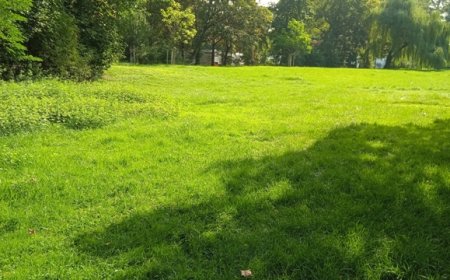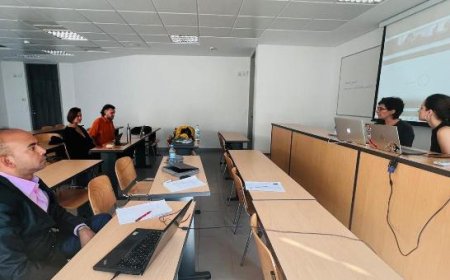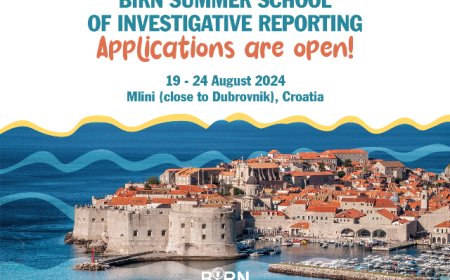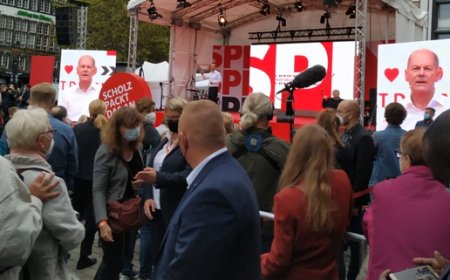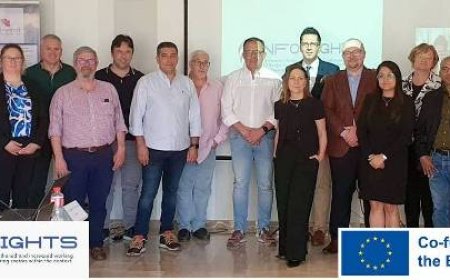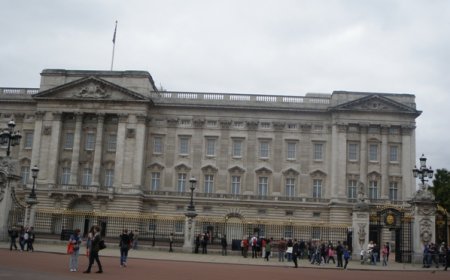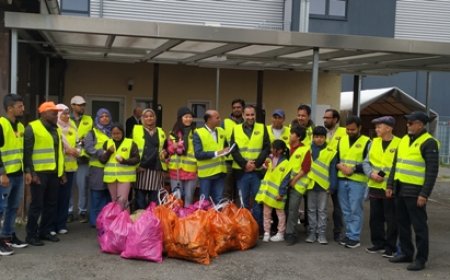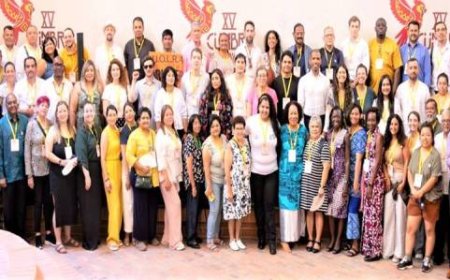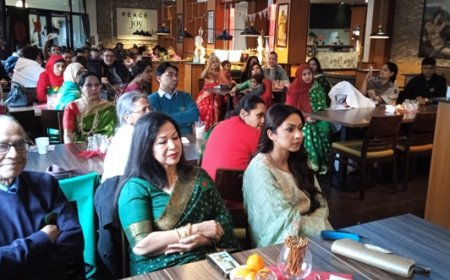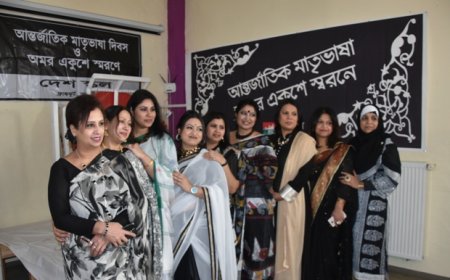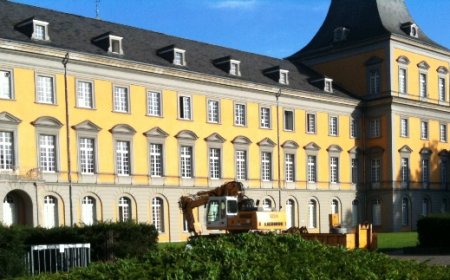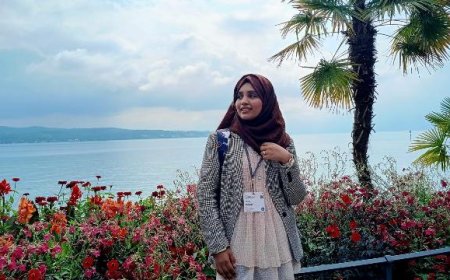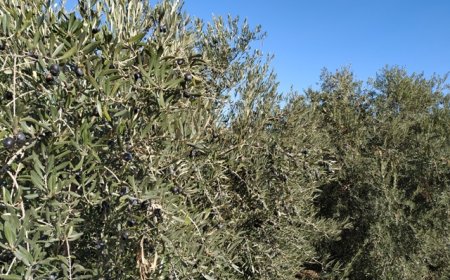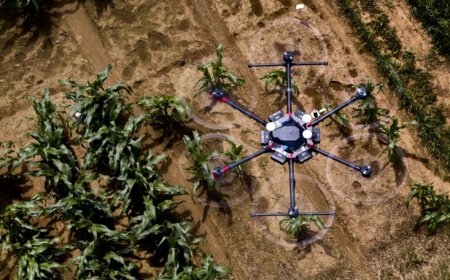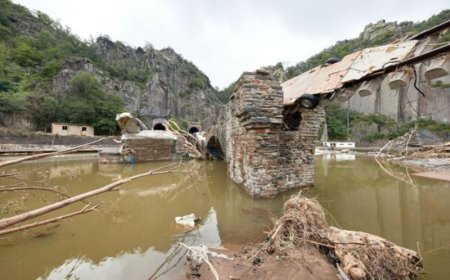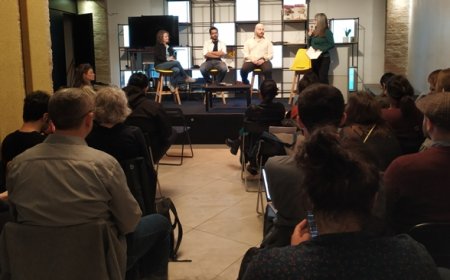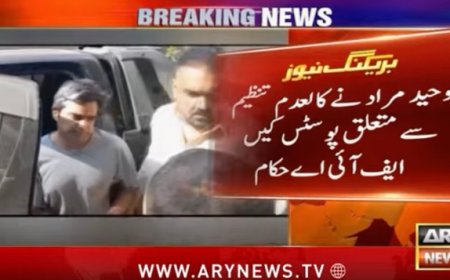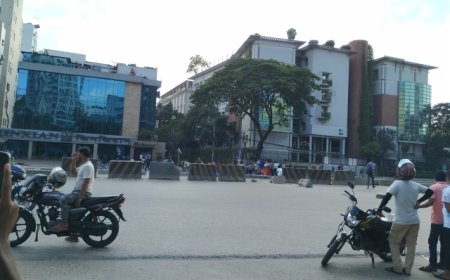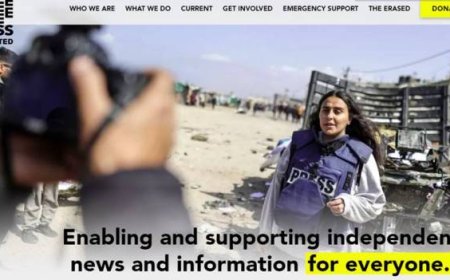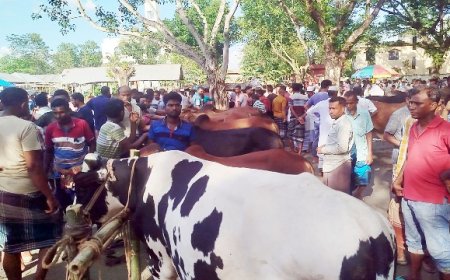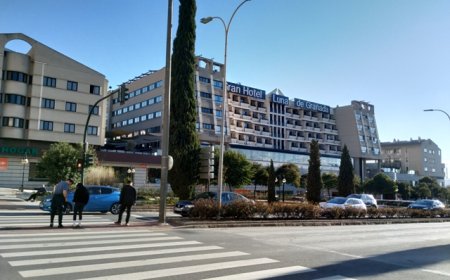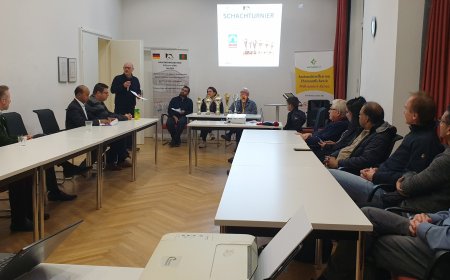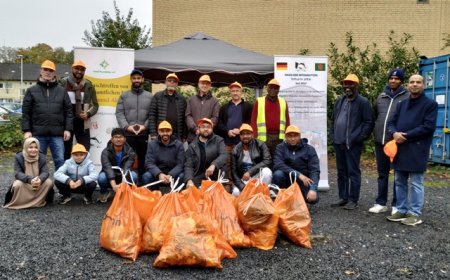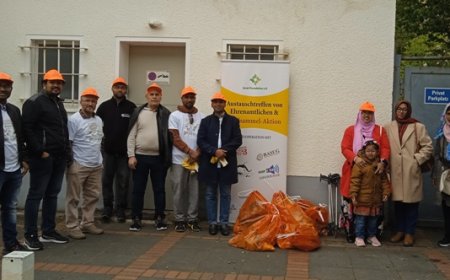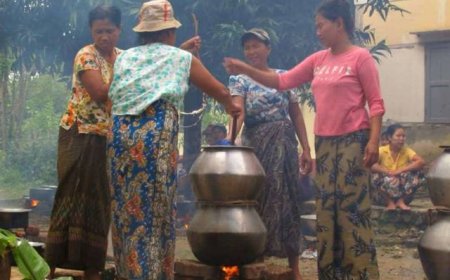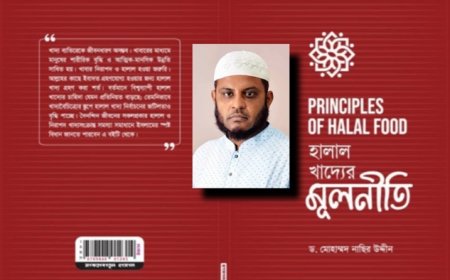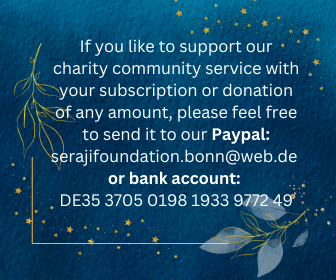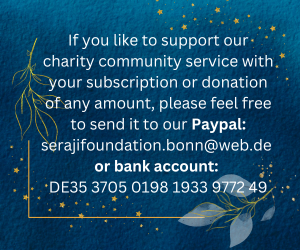Bangladeshi Tree-Men and Woman Facing Multiple Challenges
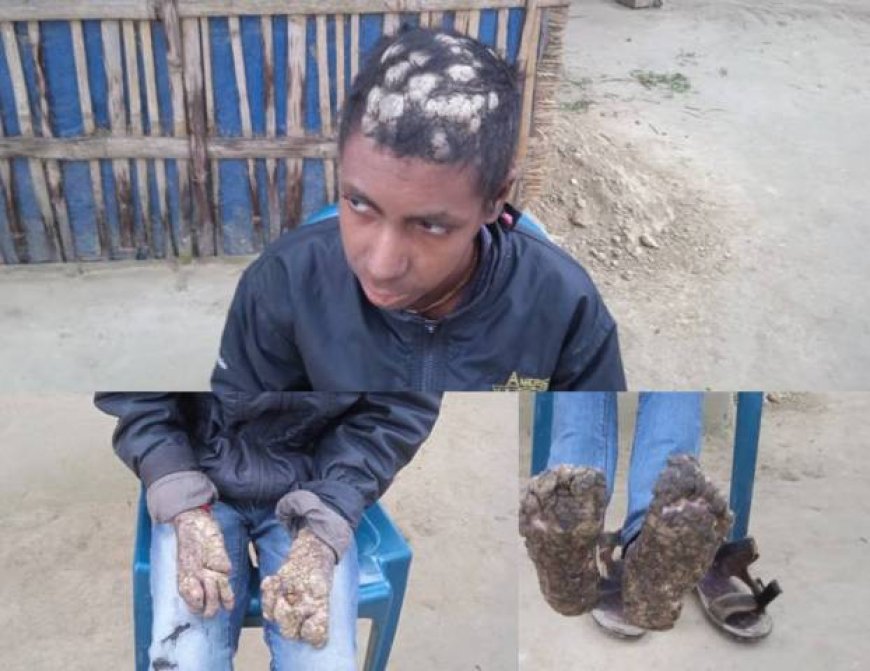
Dr. Hossain Abdul Hai, NPF (USA) Fellow
Two Bangladeshi men named Abul Bajandar and Ripon Das and one girl named Shahana Khatun have been suffering from an extremely rare genetic disease known as “tree man” syndrome. Our Voice exclusive research finds that they have been deprived of proper treament and operation because of having no health insurance system, not enough pre and post-operation counselling and extreme poverty.
First Tree Man in Bangladesh
Abul Bajandar is one of them, who underwent a series of complex operations to remove lesions which resemble tree branches from his hands and feet. The condition is caused by a defect in the immune system which increases one’s susceptibility to Human Papilloma Virus, often leading to chronic HPV infection, skin lesions and an increased risk of developing melanoma skin cancer. It is so rare there have only been a handful of reported cases around the world.
“Abul Bajandar is the first patient in Bangladesh, who was diagnosed and underwent multiple operations for his genetic disease Epidermodysplasia Verruciformis. Two other patients of the same tree-men syndrome are under the treatment. However, another such a patient of this rare genetic disease came to our hospital from Pirganj Upazila under Rangpur district. However, she fled the hospital without treatment and is still remaining in disguise without treatment“ confirmed the Health Minister and National Coordinator of Sheikh Hasina National Institute of Burn and Plastic Surgery and for all burn units in Bangladesh Dr. Samanta Lal Sen in an exclusive interview with this reporter.
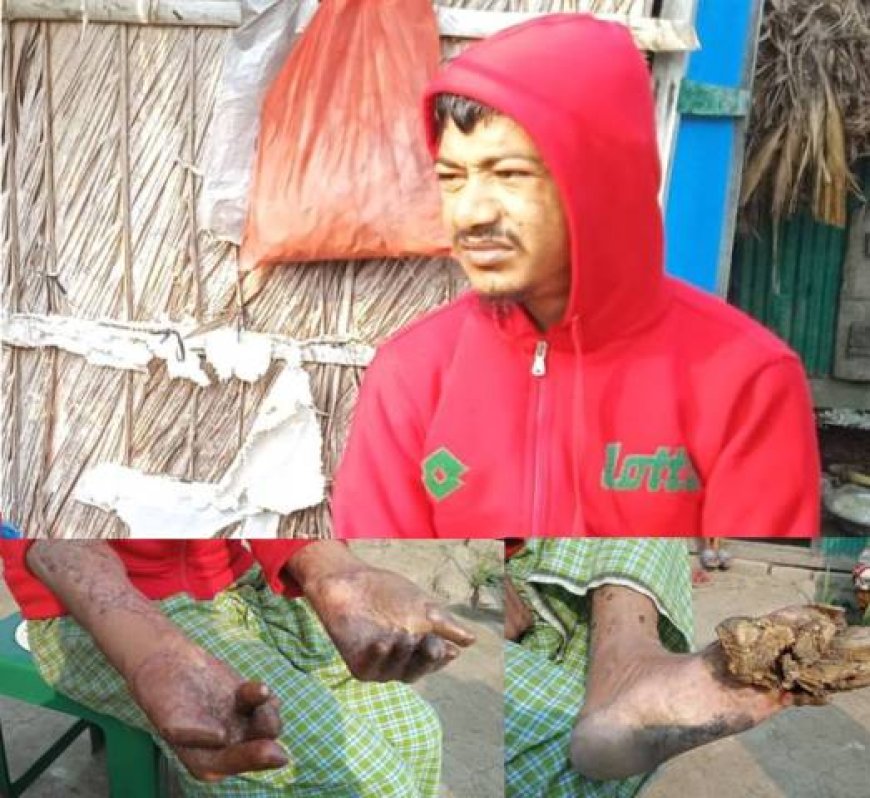
Photo: ah/ov
Born in 1988 in Khulna Abul Bajandar first noticed the bark-like lesions when he was 13 years old. Since then he started its treatment in the local health complex and sometimes under homeopathy practitioners. Bajandar has travelled to India three times spending about six hundred thousand Bangladeshi Taka (6000 USD) for treatment. Dr. Umesh Kumar Vohra from Kothari Medical Centre in Kolkata opined that the wrong dose of Homeopathy medicine reacted to this disease negatively and worsened the situation.
Almost 15 years he had to spend in this wrong treatment, when he got no cure, rather the situation turned worse. The bark-like warts encompassed his hands, stealing his livelihood as a rickshaw driver. His early treatment from the local village doctors and homeopathy practitioners led his condition into worse, opined Bajandar in an interview retrospecting in his thatched house at Chunkurhi.
Before the surgeries, Bajandar could not eat, drink, brush his teeth or take a shower by himself. “I want to live like a normal person. I just want to be able to hold my daughter properly and hug her,” he told the media before the operation. In 2017, the surgeries improved the situation enabling him to eat and write using his own hands. However, Bajandar could not continue further treatment and operation and even left the hospital without notifying the medical staff because of panic and also acute poverty.
Father of two daughters Abul Bajandar (35) lives in a remote village of Dacope Upazila about 250 Km away from the capital Dhaka in Bangladesh. Bajandar lives with his wife and children in a thatched house in the river bank in Chunkuri village. He has been suffering from rare genetic disease Epidermodysplasia verruciformis for about two decades. Primarily he has visited village doctors and homeopathy practitioners in Khulna and later also in several cities in India without any success. Only when the local journalists published the story of his rare disease, the health department could offer first ever medical support to him in the specialised hospital in Dhaka.
The specialist physicians in Dhaka Medical College Hospital and Sheikh Hasina National Institute of Burn and Plastic Surgery (SHNIBPS) led by Dr. Samanta Lal Sen have conducted multiple operations in both hands of Abul Bajandar and he has better feelings about his condition in the hands. As he reacted immediately after the operation, „Now I can touch my daughter with my hands, which I could not imagine earlier“. However, his feet have yet been operated by the physicians. So still he has been suffering from the pain and abnormal growth and size in his both feet. He cannot stand and walk freely without help of any other person in the family.
Bajandar had more than 25 surgeries since 2016, but mainly in the hands, when doctors have removed about 5 Kilogram greenish-grey gnarled protuberances from his skin. Bajandar’s condition is now almost 50% cured, with lesions on his hands are almost cured, but the warts in his feet are still remaining without operation.
There is no health insurance facilities in Bangladesh. That is why, all patients are supposed to pay the cost of treatment, operation and the cost of medicines privately, which is quite impossible to bear for such a poor family of Abul Bajandar, Shahana Khatun and Ripon Das. Therefore thier treatment and operation are only possible, when the Social Service Department pays all costs of medical treatment, operation, costs of medicine and also the fee of the hospital for staying in the beds of the hospital for weeks or in some cases for a couple of months. In spite of this financial support from the Social Service Department, it remains quite challenging for their families, as the patient cannot remain alone in the specialised hospital in Dhaka, the capital of Bangladesh for weeks or months.
In case of Abul Bajandar, his wife and two daughters had to spend two months in the hospital or nearby areas in Dhaka during his operation in Sheikh Hasina National Institute of Burn and Plastic Surgery, as there was no alternative baby care facility for their small children, when both Abul Bajandar and his wife had to stay in Dhaka. In this reality, Abul Bajandar had to bear the cost of four persons for staying in Dhaka, while he got financial support from the Government for only one person. Moreover, they could not earn any single paisa during these months, as the whole family was engaged for a single cause, i. e. the treatment and operation of Abul Bajandar. Also both small children were deprived of learning in the schools, as they had to miss the classes during this time. As Abul Bajandar told Our Voice, "I receive only about 5000 Taka (50 USD) in a year as disability allowance. With this money should I buy medicine, pay for the education of our daughters or bear the cost of food of our 4-member family?"
First Tree-Woman Shahana Khatun
Shahana Khatun (16), student in Class IX of Secret Heart High School in Kalmakanda, has been suffering from a large number of warts in her face and also in several parts of her body. Physicians have termed her disease Epidermodysplasia verruciformis, which is known as Tree-Man syndrome. This disease has been identified so far only among the male patients, before Shahana has been identified in 2018. Since then Shahana has been considered as the first female patient of this syndrom in the world.
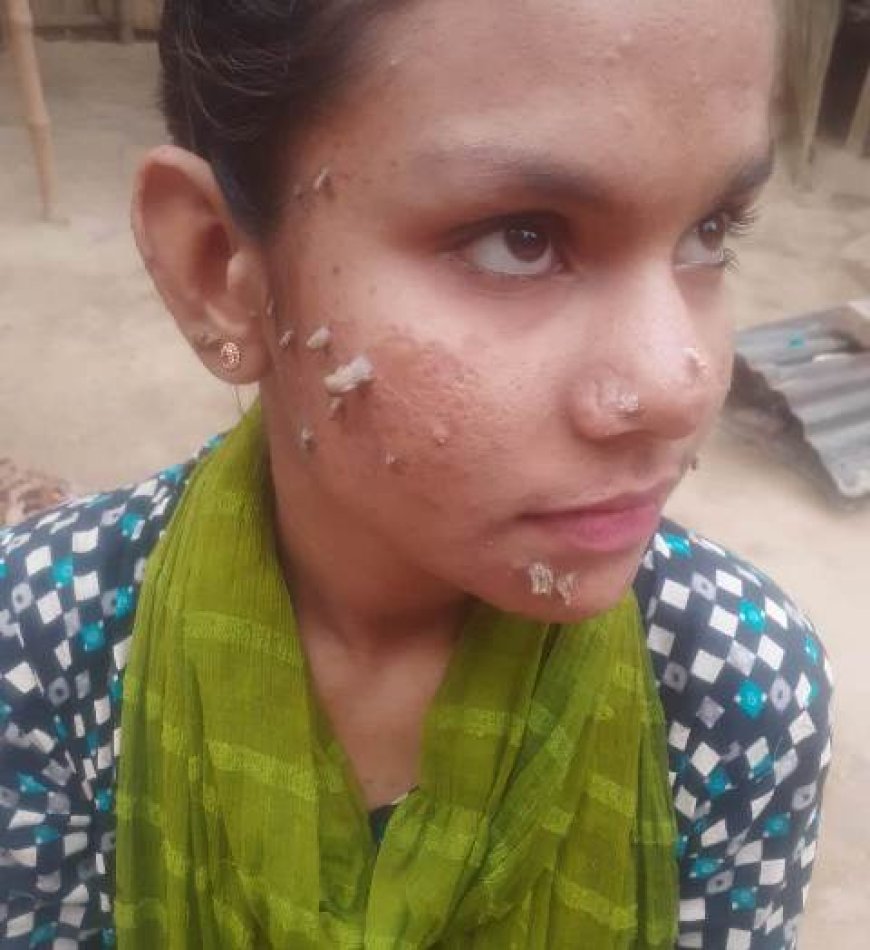
Photo: ah/ov
Shahana lives with her father and grandmother in Baluchora village under Kalmakanda Upazila in Netrokona district, which is about 185 Kilometer away from the capital Dhaka. She lost her mother during her childhood. Shahana’s father Shahjahan is a farmer and day labourer. He is the only person, who earns from hand to mouth and the whole family is dependent on his income. Shahjahan told Our Voice, "If I buy medicine for Shahana, we cannot buy food for our three-member family. That is why, we could not continue this Homeopathy medicine, although it helped Shahana’s disease get better."
Homeopathy physician Dr Hafizur Rahman, having experience of working in Bismillah Homeo Hall in Dhaka for about eight years, in an interview with Our Voice opines, "It is one kind of big warts, which are a bit hard and dry. I have tried my best to combine the Homeopathy medicine to treat this disease. However, they took medicine only twice from me and did not complete the course. In Homeopathy it is very important to complete the whole course for the best result."
Shahana has endured two operations in her face and body in Sheikh Hasina Burn and Plastic Surgery Institute free of cost in 2018. However, she got anesthesia for operations, which appeared very risky to her family and that is why they did not continue further treatment there. Doctors declared that surgery a success but her father said that the growths returned in even greater numbers.
Acute poverty is also another factor to the disruption of the treatment. Like the case of Abul Bajandar, she has also got the treatment free of cost in Dhaka and also the financial support for the patient only. However, if they continue the treatment and operation there, her grandmother and her father have to stay in Dhaka together with Shahana. Then her father cannot work and earn any penny to buy their food and accommodation there. That is why, they dare not accept the offer of free treatment in Dhaka.
If Recovered, Ripon Wants to be a Doctor
Ripon Das (15) is now a student of class eight in P S High School in Pirganj under Thakurgaon District. He has fascination in drawing and painting. He has a long cherished dream to be a doctor to serve the community and to offer treatment and cure to the patients, as physicians have treated him well with their devotion and cordial effort. However, acute poverty challenged his fight to win the rare disease Epidermodysplasia Verruciformis (EV), which is commonly known as Tree-Man syndrome.
His father Mohendra Das, who is a cobbler in profession, marked the tree-man syndrom in the hands of Ripon, when the latter was only three months. He tried his best to go to several physicians and experts for the treatment of Ripon. However, he has spent all of his resources from money and efforts for his treatment, but could not complete the medical course of treatment because of the acute financial crises.
Mohendra Das told Our Voice, “one day there was a social party in this village, where one friend of a journalist came here and saw Ripon and his disease. He took his photo and shared it with his journalist friend. Then the local journalist published a report on the disease of Ripon Das and many people came ahead to help his treatment and we got free treatment and operation in BIRDEM General Hospital and Sheikh Hasina National Institute of Burn and Plastic Surgery. After a number of successful operations in his hands and feet, presently he took medicine from Dr. Md. Faysal Azam from Rangpur Medical College and Hospital, which has improved his condition. However, the course of about 7 types of medicines cost around two thousand Bangladeshi Taka (20 USD) per month, which we could manage only for few months and could not continue regularly because of the financial crisis.“
Unlike other two rare disease patients, Ripon’s hands and feet turned into black colour and he has also got infected in the skin of his head. He receives only 5000 Taka (50 USD) a year as government subsidy for the people with disability, while he has to pay 5000 Taka to buy medicine for only 2/3 months.
Urge for Health Insurance System to Ensure Equal Health Facilities
Former Consultant in Bangladesh Institute of Dermatology Dr Mashiul Alam Hossain said, these patients are primarily treated with three options namely electro surgery, cryo surgery or laser surgery. However, when the state of the disease becomes much worse and in the acute level these patients are shifted to the burn unit and should be treated with plastic surgery. As these three patients of rare disease live in the far remote area in the country, they were not aware of any treatment facilities in the early stage of their rare genetic disease and only the media professionals brought them to the light and they got the treatment and operation facilities after several years of their sufferings.
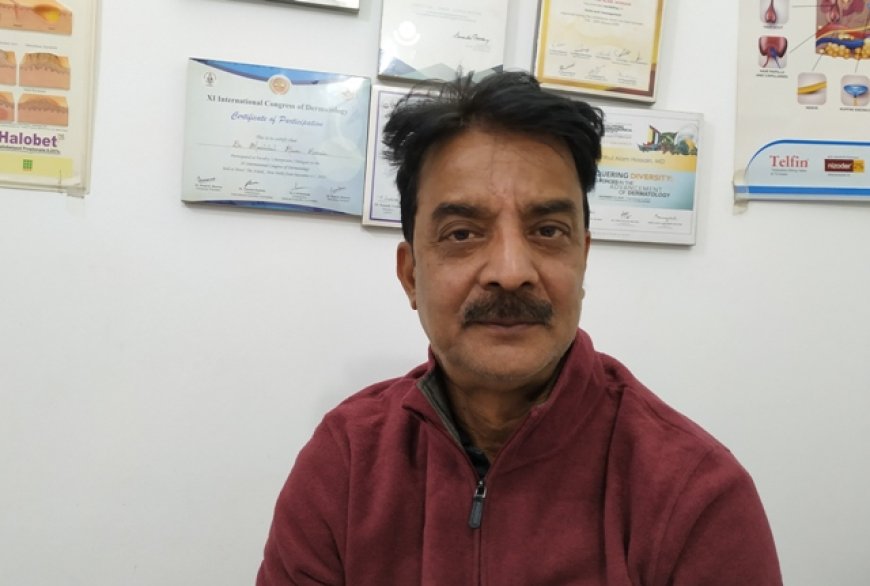
Dr Mashiul Alam Hossain Photo: ah/ov
In his opinion, „As Bangladesh has about 180 Million people without health insurance facilities, these poor people are often deprived of proper awareness of access to timely health facilities. From these considerations, I think that the number of the patients of this rare genetic disease could be much more, if we could have the proper health data bank of all people in our country." He stressed on the basic health insurance facilities for all people in Bangladesh to ensure the equal access to the treatment and health facilities to combat such a rare cases with much importance.
International Support and Cooperation Inevitable
However, Health Minister of Bangladesh Dr. Samanta Lal Sen stressed on the joint effort of Bangladeshi health professionals and international health institutions and professionals to take immediate initiative to ensure proper medical facilities, operation, proper counselling, free medicines and if necessary also gene therapy to these patients of genetic rare disease.
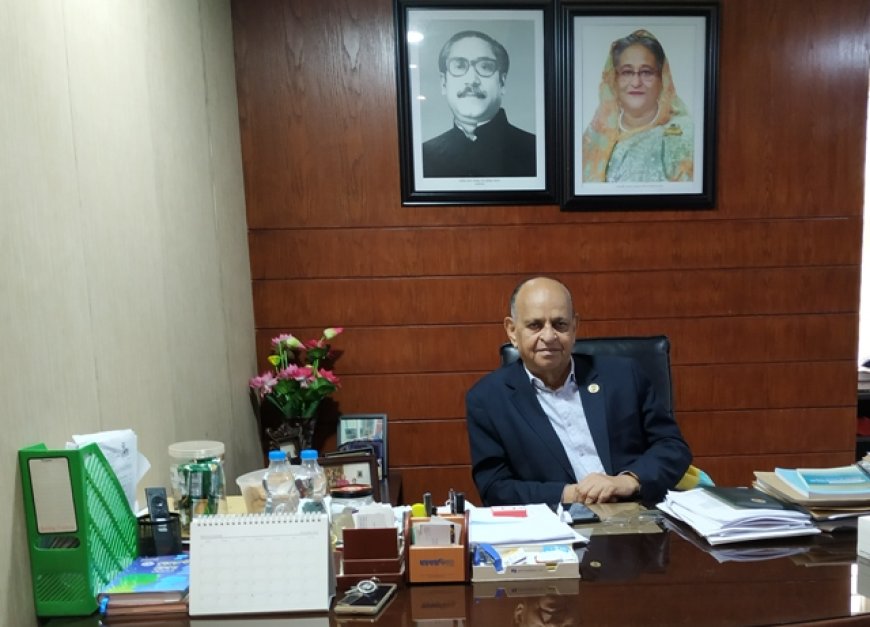
Dr. Samanta Lal Sen Photo: ah/ov
He called upon the international humanitarian organizations and health institutions to come ahead with their support and expertise to save lives of these patients, as Bangladeshi health professionals in cooperation with the Hungarian charity organisation ‘Action for Defenseless People Foundation‘ have successfully separated twins born conjoined at the head in 2019.
What's Your Reaction?







